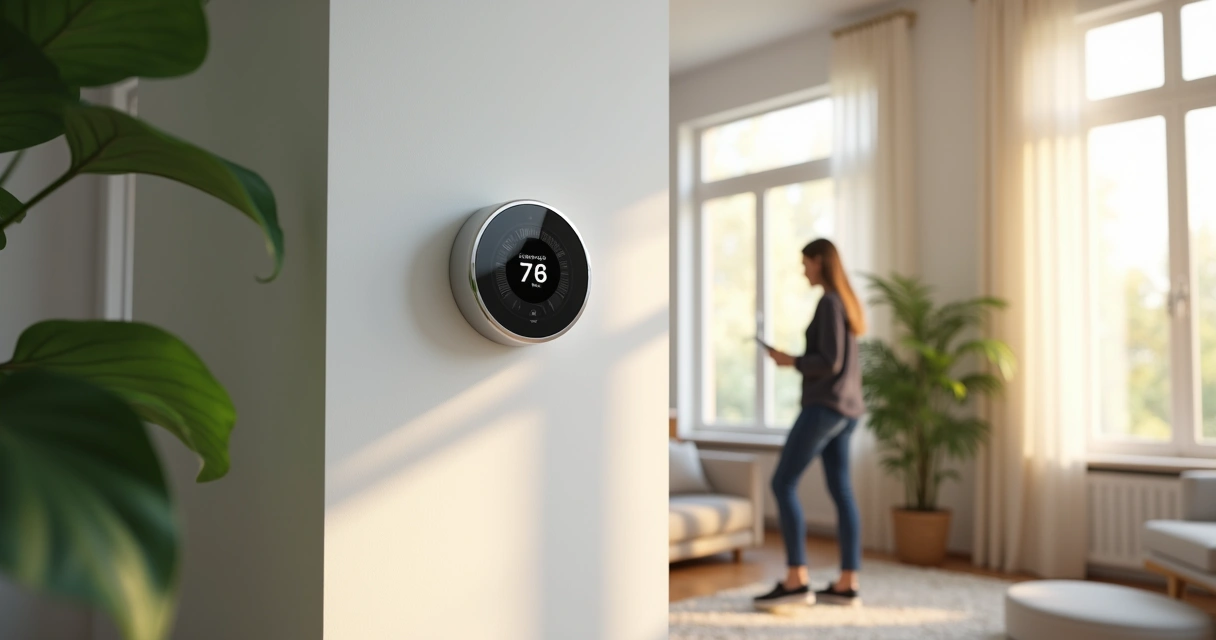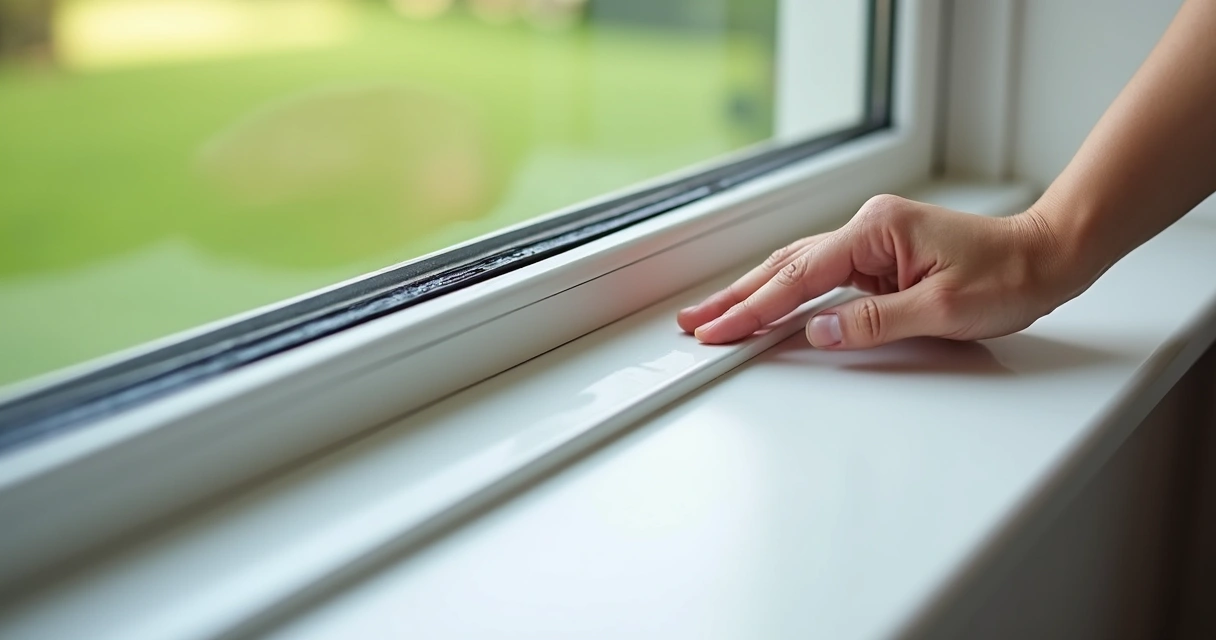I’ve always felt a strange sort of pride when my bills come in lower than expected. Maybe it’s silly, but every bit saved feels like a win. Over the years, I’ve tinkered, tested, and sometimes tripped over countless ways to cut costs at home. Some tricks were a miss. Others—surprisingly simple—worked immediately. Here, I’ll share eight changes that really made a difference in my own life. Nothing radical, nothing that makes day-to-day living uncomfortable, but things that add up before you even notice.
Look at your thermostat differently
This was my first “aha” moment. I used to let the temperature run a little too high in winter and a bit too cool in summer. Comfortable, sure, but expensive. I read somewhere—can’t remember where—that every degree you dial down in winter, or up in summer, makes a bigger difference than you think.
- Set the thermostat a degree or two lower in winter. Wear a sweater indoors. It’s cozier than you expect.
- During summer, raise it slightly. Use a ceiling fan or a desk fan for airflow. The room feels better without pushing the AC so hard.
Small thermostat adjustments can reduce your energy usage noticeably over a month. If you want to go further, a programmable or smart thermostat does the job even better. You just set it and forget it.

Switch to LED bulbs in every room
When I finally swapped out old bulbs for LEDs, I didn’t notice an immediate visual change, but my electricity bill quietly dropped. LED bulbs use way less power and last much longer. I was skeptical at first, but a few months told a clear story.
- Replace bulbs room by room—no need to do it all at once.
- Opt for warm white LEDs if you’re worried about harsh lighting. They’re surprisingly nice.
- Look for sales in bigger packs. I usually found better prices this way.
LEDs last years, not months.
Work on your water usage without big sacrifices
When I first tried to “save water,” everything felt inconvenient—shorter showers, less laundry, and so on. But I found easy changes too.
- Install an aerator on faucets. It mixes air with water, using less but still washes hands or rinses dishes just as well.
- Fix any dripping taps quickly. That annoying drip equals real money down the drain over weeks.
- Simplify your showers. Sometimes two minutes shorter saves more than you think, and you rarely even notice.
Small leaks and wasteful habits add up quietly, costing more than you might expect.
Use appliances smartly
I never realized how much power small appliances use until I became curious. I started unplugging devices that weren’t used, and over time, tried to run the dishwasher (and washing machine) only when full. It was an easy switch and, honestly, it became a habit after just a week.
- Only wash full loads—dishes or clothes. It saves water and power together.
- Unplug chargers and electronics when not in use. Some still use a bit of energy even when “off.”
- Use eco-modes if your machine has them. The difference isn’t huge per load, but it adds up over a year.
Full loads. Fewer washes. Lower bills.
Rethink the way you cook
Cooking surprised me as a place to save. I noticed that keeping a lid on the pot makes things cook faster. Preheating the oven for shorter times also helped. And, whenever it made sense, I’d batch cook—making several meals in one go—then reheat them in the microwave or toaster oven, which use less energy than firing up the stove daily.
- Use lids to keep heat in.
- Prepare bigger meals, then enjoy those leftovers.
- Try not to open the oven door often—it really does let a lot of heat escape!
Efficient cooking methods not only lower energy use but free up your time too.
Insulate—just a little
Not everyone wants to spend a lot on insulation projects. I certainly didn’t, so I tried simple steps. Door draft stoppers and weather stripping for windows kept out chilly drafts in winter and warm breezes in summer. The rooms felt steadier in temperature. A rolled-up towel pressed against the bottom of a leaky door worked too, if a bit scrappy.
- Weather strips aren’t pricey, but make a difference around old windows.
- Door draft blockers are cheap—or improvised with what you have at home.

Cut back on stand-by consumption
I didn’t think about this until I started adding up the number of things that glowed or showed a light when supposedly “off.” Routers, TVs, game consoles, chargers—they’re called “energy vampires” for good reason.
- Plug your devices into a power strip. One switch cuts power to all when not needed.
- Check your appliances—some newer models have lower stand-by usage, but many still add up over time.
Stand-by power isn’t invisible—it’s just silent.
Shop around for better rates (once a year)
Every year, I make it a habit to check if I can get better rates for electricity, internet, or even mobile service. Sometimes, just calling your current provider and mentioning a better rate you heard about gives you a discount or some extra feature. Other times, I find it makes sense to switch, hassle and all.
- Check your contract each year—many deals expire after 12 months and rates go up.
- Don’t be afraid to negotiate, even if you’re usually shy about such things.
- Ask about “loyalty” or “retention” offers—they’re more available than most people realize.
Regular reviews of your household service plans uncover hidden savings most people miss.
Conclusion
I’ve tried dozens of ideas to keep household bills manageable, and these eight have always stuck. They’re not complicated or expensive, and most days, I hardly think about them. But every month, when the water, electric, or gas bill arrives, I notice that little lift in my mood. And it feels completely worth it.A small change here, a quick fix there—those choices build the kind of financial comfort that makes life just a little bit lighter.
Frequently asked questions
How can I lower my energy bill?
You can lower your energy bill by making small tweaks—like using LED bulbs, adjusting your thermostat, unplugging devices, and running appliances only with full loads. I noticed it’s less about big changes and more about tweaking daily habits. Also, consider better insulation and taking care with how you cook or heat water. All those tweaks combined made my bill drop without me really feeling deprived.
What are easy ways to save water?
Fix leaks right away and use faucet aerators to cut down on water use instantly. I started taking slightly shorter showers and running the dishwasher or washing machine only when full. These tiny steps, while barely noticeable day to day, stacked up to a nice reduction in my water bill.
Is it worth switching energy providers?
When I checked rates once a year, I sometimes found switching saved real money, especially after introductory offers expired. It does take a bit of effort, but calling your current provider and asking for a better deal can get you savings too—even without switching. I found the process straightforward and it’s become an annual habit.
What are the best smart thermostats?
There are several well-reviewed smart thermostats available, but what matters to me is how easily it integrates with my heating or cooling system, how user-friendly the controls are, and whether it offers things like learning routines or remote app access. I suggest looking for one that matches your daily needs and can be programmed for when you’re sleeping or away, as these features save the most.
How much can I save with LED bulbs?
Switching to LED bulbs can save you around 70–80% on lighting energy use, compared to old incandescent bulbs. Over the year, in my case at least, the drop on the electricity bill was clear. Plus, since LEDs last much longer, you rarely need to replace them—the savings stack up more than you might expect.
